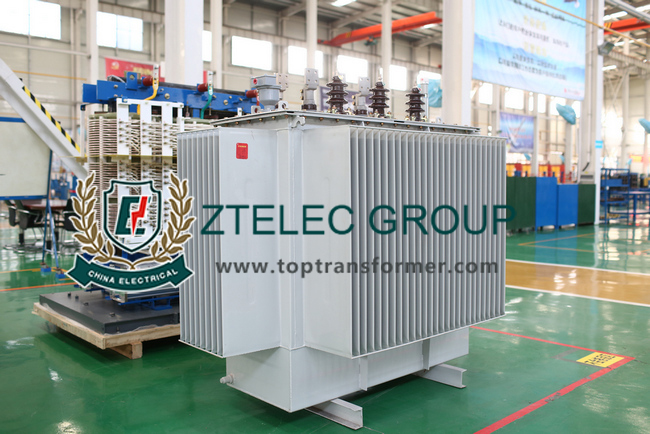The oil-immersed power transformer is mainly composed of a core, a winding, a fuel tank, an oil pillow, an insulating sleeve, a tap changer and a gas relay.
1.Iron core
The iron core is the magnetic circuit portion of the oil-immersed distribution transformer. During operation, hysteresis loss and eddy current loss are generated to generate heat. In order to reduce heat loss and reduce volume and weight, the core is composed of a cold-rolled grain-oriented silicon steel sheet having a magnetic permeability of less than 0.35 mm. According to the arrangement of the windings in the iron core, there are iron core type and iron shell type.
In a large-capacity transformer, the heat generated by the core loss can be sufficiently taken away by the insulating oil during circulation to achieve a good cooling effect, and a cooling oil passage is often provided in the iron core.

2. Winding
The windings and core are the core components of the power transformer. Since the winding itself has a resistance or a contact resistance at the joint, it is known from Joule's law that heat is generated. Therefore, the winding cannot pass a current higher than the rated current for a long time. In addition, the short-circuit current will cause a large electromagnetic force on the winding to damage the transformer. The basic windings are concentric and overlapping.
The main fault of oil-immersed transformer windings is short-circuit between turns and short-circuit to the casing. The turn-to-turn short circuit is mainly caused by insulation aging, or mechanical damage due to overload of the transformer and through-short-circuit. When the oil level in the transformer drops, the winding can be short-circuited when the winding is exposed to the oil surface. In addition, when the short circuit is crossed, the winding is deformed due to overcurrent, and the insulation is mechanically damaged, and a turn-to-turn short circuit is also generated. In the case of a short circuit between turns, the current in the short-circuit winding may exceed the rated value, but the entire winding current may not exceed the rated value. In this case, the gas protection action, when the situation is serious, the differential protection device will also operate. The reason for the short circuit to the outer casing is also due to insulation aging or oil dampness, oil level drop, or due to lightning and operating overvoltage. In addition, when a short circuit occurs, the winding is deformed by an overcurrent, and a short circuit occurs to the outer casing. When the case is short-circuited, it is generally a gas protection device action and a ground protection action.
3. Fuel tank
The body of the oil-immersed transformer (winding and iron core) is housed in a fuel tank filled with transformer oil, and the fuel tank is welded with steel plates. The fuel tank of the medium and small transformer is composed of a casing and a cover. The body of the transformer is placed in the casing, and the cover can be opened to carry out maintenance.
ZTELEC is a professional manufacturer of oil-immersed transformers in China. It has many years of production experience and is a partner with international electric companies such as Schneider.









Leave A Comment